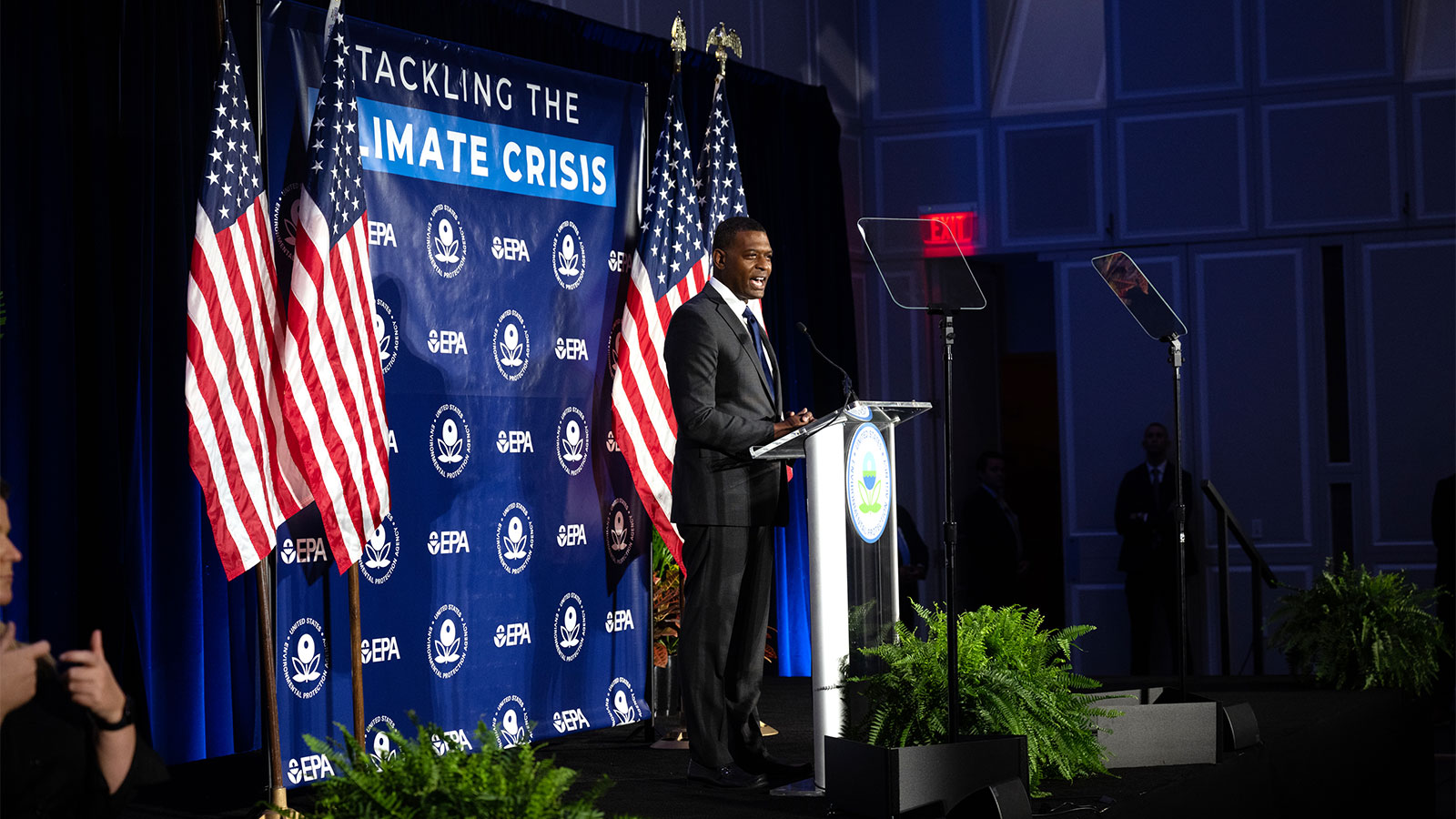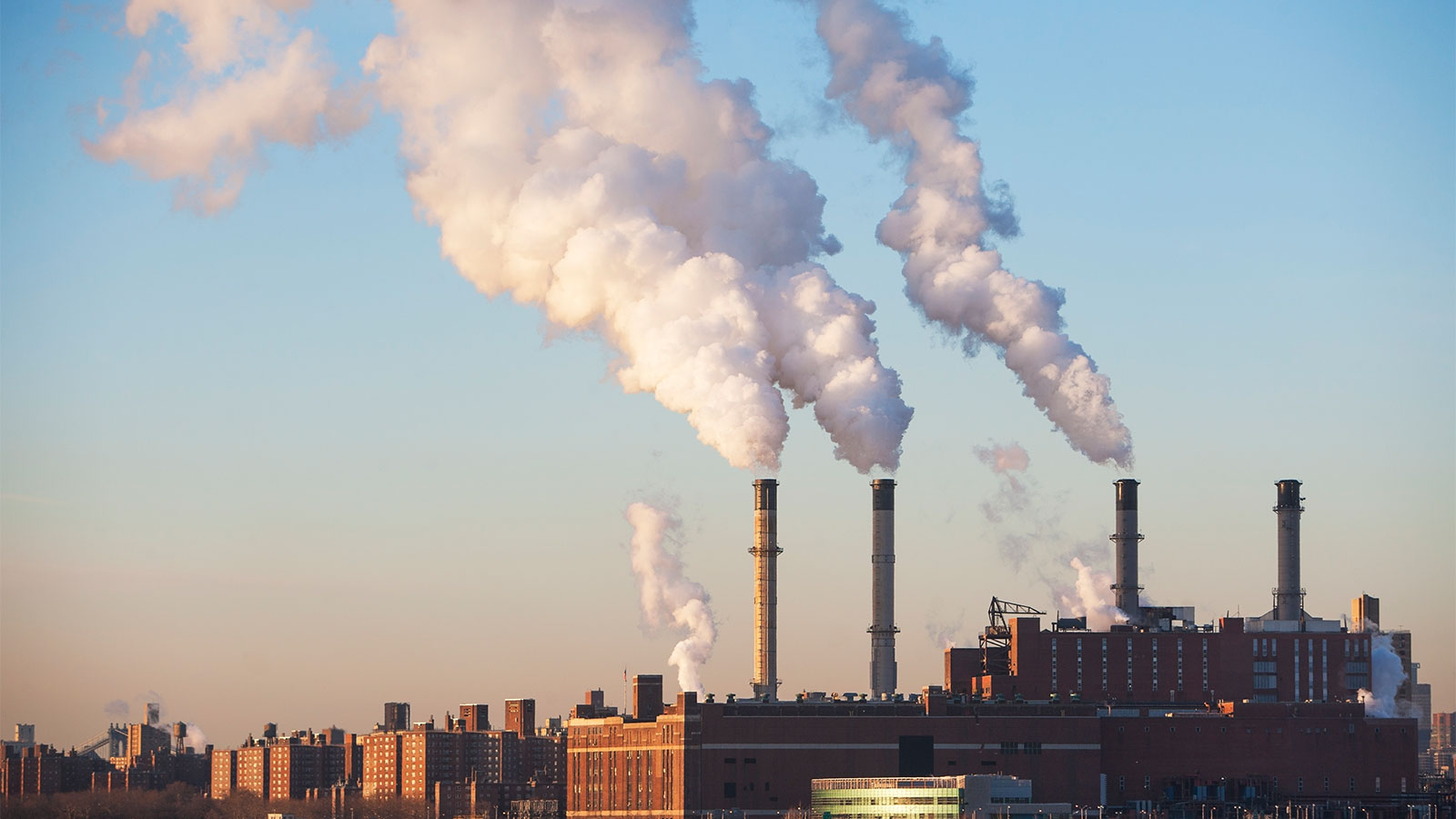In early May, the Environmental Protection Agency issued preliminary carbon standards for power plants. The proposal provides President Joe Biden a unique opportunity to dramatically reduce greenhouse gas emissions. Yet environmental advocates say the standards don’t go far enough—more stringent changes need to be adopted as quickly as possible to avoid the worst effects of climate change.
Power plants are the single largest unregulated source of carbon pollution at the federal level, contributing one quarter of overall greenhouse gasses, and one third of C02 pollution. That puts the power sector behind only the transportation sector in overall emissions.
As electrification increases demand for power, regulating this industry is more important than ever. Even with the current power generation mix, electric vehicles are cleaner than cars with internal combustion engines. But as more and more EVs, heat pumps, and other electric devices are adopted nationwide, where the power that fuels them comes from is increasingly important to overall emissions.
“Decarbonizing the power sector is the linchpin in cleaning up the rest of the economy,” says Charles Harper, power sector policy lead for the environmental advocacy group Evergreen Action. “Reducing emissions from the power sector is one of the best ways that the President can tackle climate change this decade.” Harper’s group formed at the end of former Washington governor Jay Inslee’s presidential campaign, urging the adoption of Inslee’s Evergreen Economy Plan. The group has been influential in shaping the Biden administrations’ approach to climate, and played a significant role in the structure and ultimate passage of the Inflation Reduction Act.
There is scientific consensus that to avoid the worst effects of climate change, average global temperatures must not rise above 1.5 degrees Celsius. According to new modeling from the Natural Resources Defense Council, the Inflation Reduction Act will reduce U.S. carbon pollution to around 40 percent below 2005 levels by 2030. That’s critically important, yet it still leaves a significant gap in Biden’s campaign commitments to reduce emissions by at least 50 percent.
That gap will cause major human sickness and suffering, says Lisa DelBuono, president of Michigan Clinicians for Climate Action, a coalition of more than 200 Michigan health professionals who came together just as the pandemic began. “People don’t understand the full range of health impacts that occur from polluted air,” DelBuono says. “We always think about asthma and lung disease, but there are associations with heart and lung disease and increased risk of dementia, and there’s a correlation with preterm deliveries and stillbirths.”
As temperatures increase, the concentration of ground-level smog increases as well. Air quality will likely get worse as temperatures climb, an effect many people aren’t aware of, DelBuono adds.
Yet despite the urgency to address these concerns, a landmark Supreme Court case, West Virginia v. Environmental Protection Agency, recently limited the EPA’s ability to require that power plants shift to cleaner energy sources like solar and wind. In 2022, the justices found that the EPA cannot mandate “generation shifting” — essentially, that they can’t require power companies to shift from fossil fuel to renewable sources.
However, the case ultimately reaffirmed the federal agency’s mandate to regulate carbon under the Clean Air Act. The justices found that the EPA can require that overall emissions be decreased. It allows power plans to choose how to meet those requirements “within the fenceline” of their own plants.
Following the ruling, the EPA took more than a year to formulate the proposed regulations announced in May. The agency aimed to create rules that would be legally viable, and hold up to challenges in court.

As proposed, the new carbon standards would require most coal plants to reduce their carbon pollution by 90 percent by 2030, and require many gas plants to do the same by 2035. Yet the scope of power plants covered by the new regulations is limited. The current proposed rules would apply only to the biggest, hardest-running gas plants — so-called baseload plants that are over 300 megawatts and run at greater than 50 percent “capacity factor.” Smaller plants and “peaker” plants, which run only at times of peak demand, would not be covered by the new standards. For those, the EPA is proposing less stringent standards based on energy efficiency or partial hydrogen co-firing (using a mix of fossil fuels and other energy sources).
Focusing on baseload plants amounts to addressing less than 23 percent of gas-fired power plant emissions. That leaves a significant swath of the industry’s emissions unchecked, Harper says.
Timelines for compliance should also be bumped up, advocates say. The new carbon standards wouldn’t require full emissions reductions for gas plans until at least 2035, potentially allowing new gas plants to be built in the meantime. They also would leave a loophole for coal plants, not requiring coal plants retiring before 2040 to hit the most stringent emissions requirements. Harper calls that “unacceptable.”
“EPA found very low compliance costs, even if the fossil fuel industry claims these rules would be armageddon,” Harper says. “Modeling has shown these rules would have a zero percent impact on people’s bills in the 2030s. Overall the benefit-to-cost ratio is 7 to 1. These are a slam dunk.”
DelBuono calls for careful monitoring and oversight, since power plants will get to choose how they meet these standards—including through things like carbon sequestration and green hydrogen. Since such technologies are newer and less studied, if they choose such alternative forms of reductions, checking impacts to water and air quality would be vital, especially for the sake of front-line communities and environmental justice.
“It’s new technology — it needs to be tested. We need to make sure co-pollutants like nitrous oxide, mercury, and arsenic do not go up,” DelBuono says. “It’s really critical where they choose to do that we have guardrails in place to make sure communities close to them don’t suffer further insults to their health.”
Advocates say the new regulations should be finalized by May 2024 in order to assure that legislators couldn’t easily roll them back. That timing would help the EPA avoid a Congressional Review Act window that could leave new carbon standards vulnerable to repeal by a future Republican-controlled Congress.
A required public comment period on the proposed rules is now open, and anyone who cares about climate change or the future of the planet is encouraged to write in and make their voices heard. The EPA is legally required to read each comment submitted, Harper emphasizes.
Public pressure is key to the tightening and timely adoption of new standards, Harper says. “It’s the highest-impact way that people have to shape these policies,” he says. “The fossil fuel industry sees the public comment process as important to them — they won’t be pulling punches. It’s important to push back.”
Evergreen Action is leading the fight to put bold climate action at the top of America’s agenda, implement an all-out mobilization to defeat climate change and create millions of good union jobs in a just and thriving clean energy economy.




